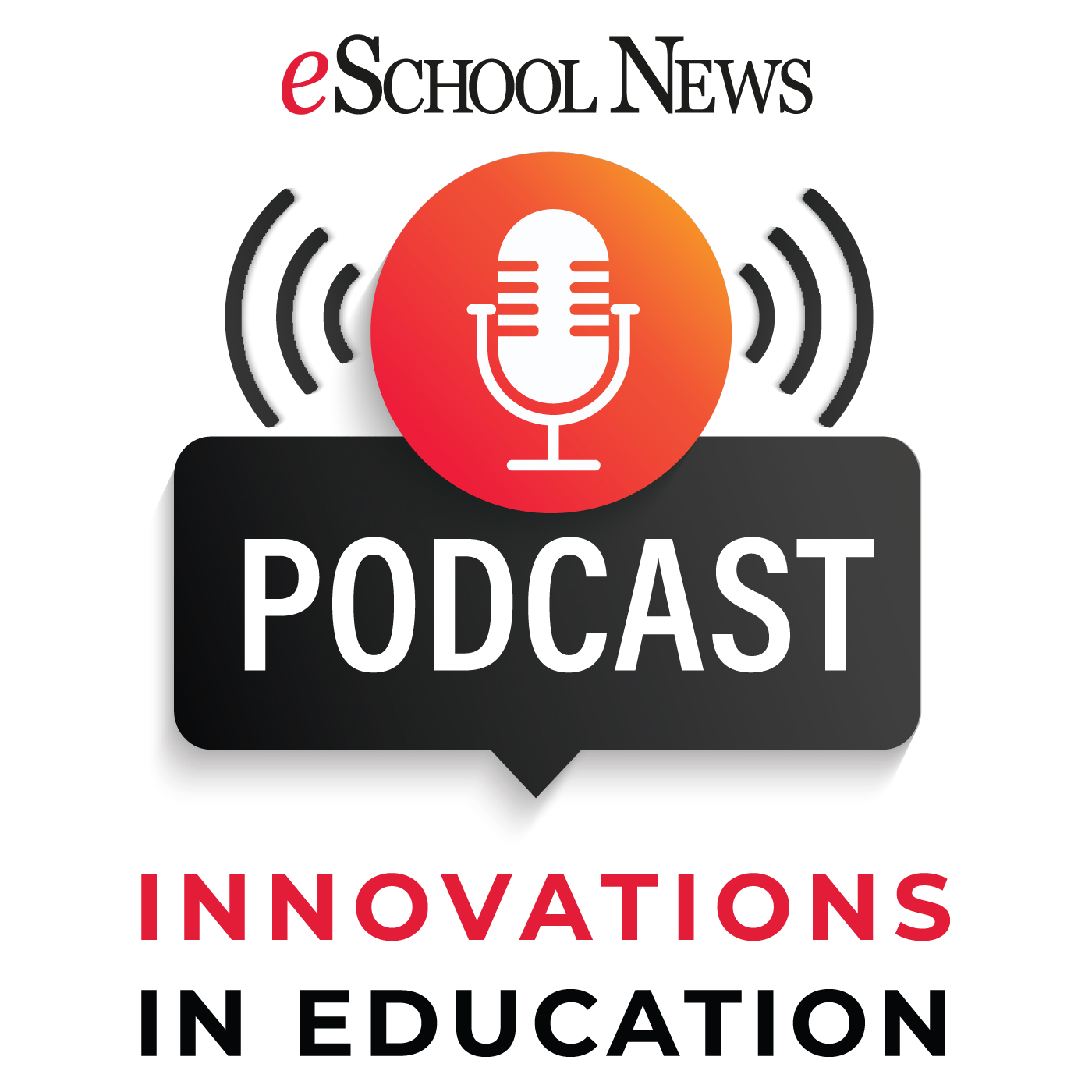Drop the company name Instructure on the average educator and you may get a blank stare in return. Now mention the company’s flagship product Canvas and be ready for a flash of instant recognition. Founded in 2008, Instructure reports having more than 6000 customer organizations with more than 35 million users around the world in both K12 and higher education.
I had the opportunity to attend InStructure Con23 in Denver last month—the company’s first user conference since the pandemic—and met many educators, partner companies, and senior leadership including Chief Product Officer Shiren Vijiasingam, Ryan Lufkin, Vice President of Global Strategy, and CEO Steve Daly. We hit on a number of topics that will affect the way educators and students teach and learn, including post-pandemic behaviors, student security, the pursuit of equitability and education, and the future of hybrid learning. Plus of course, AI, AI and yes, a little more AI. This was the first Innovations podcast recorded in person, but it certainly won’t be the last.



More Highlights from InstructureCon23:
The company and Khan Academy announced a partnership that brings Canvas, the anchor of the Instructure Learning Platform, and Khan Academy’s AI-powered student tutor and teaching assistant, Khanmigo. This new solution enable educators with an integrated Khanmigo experience that supports human-driven, technology-enhanced essay feedback and grading, lesson planning and rubric creation. This solution is a large step forward in delivering personalization for each student while allowing busy educators to scale their excellence and impact in ways unimaginable a few short months ago.
For students, the use of generative AI presents significant opportunities and challenges. In a world filled with intelligent agents and easily-accessed answers, the need for tools that guide, enhance and support active learning is critical. Initially focusing on student writing, Instructure and Khan Academy aim to support students and their learning through Khanmigo’s tutoring capabilities. By helping students use generative AI ethically, equitably, and with integrity, demonstrating an authentic work product becomes easy and clear.
Instructure’s Learn Platform independent research team, along with Khan Academy’s educational research team, will jointly design research for early adopters, to measure the impact of these tools on student outcomes – delivering insight into the efficacy of the tools and the utilization of AI to assist teachers and students in achieving their learning outcomes.
“Every educator we talk to is seeking ways to address students using ChatGPT to write school essays and do homework,” said Sal Khan, founder and CEO of Khan Academy. “How can classrooms use AI tools, while ensuring students develop critical thinking skills? We’re teaming up with Instructure to solve this. We’re using AI to show teachers not just the final essay, but how the student got there. So students will be supported in developing critical writing and thinking skills, while getting the benefit of AI designed for education. Khanmigo can also help with rubric creation and grading, saving teachers time. Students won’t get answers, but they will get appropriate levels of support.”
Instructure and Khan Academy will bring Canvas and Khanmigo together for a cohort of K-12 and Higher Ed design partners and early adopters during the 2024-2025 school year. Institutions interested in piloting this solution can sign up in the Emerging AI Marketplace.
The company also announced that Instructure’s partner program, The EdTech Collective, has added over 100 new edtech companies in the past year and now comprises over 850 partners.
Instructure partners and sponsors were in attendance throughout the event to provide insights into the latest developments in edtech. AWS and K16 Solutions are the exclusive Diamond sponsors of InstructureCon 2023, and Lincoln Learning Solutions and Class Technologies join as Platinum sponsors. The conference will include highly-anticipated sessions on generative AI technology, such as ChatGPT. As AI continues to change the edtech landscape globally, reputable AI partners in the Instructure partner ecosystem provide valuable support for educators looking to implement a safe, equitable approach to AI that supports learning. Fifteen edtech companies with AI solutions will attend the conference.
“Our customers greatly benefit as their edtech providers integrate with the Instructure Learning Platform, ensuring their teaching and learning tools work seamlessly to deliver a meaningful learning experience for students,” said Liz Crawford, VP of Partnerships at Instructure. “Instructure’s open platform and ease of integration enables edtech companies to meet their customers where they are and scale their businesses through our market-leading LMS. We’re continuing to evolve The EdTech Collective to provide even more value for Instructure customers and benefits for our partners.”
Recent LearnPlatform by Instructure data shows that K-12 institutions are accessing almost 1,400 edtech tools each month. With the proliferation of edtech tools continuing at a rapid pace, it’s essential for institutions to be able to rely on trusted partners with demonstrable interoperability. With Instructure’s LearnPlatform offering, institutions can make evidence-based decisions about teaching and learning solutions as they build their learning environments. Edtech companies leverage Instructure’s evidence services to deliver efficacy research faster and more affordably.
The company also unveiled enhancements centered around core teaching and learning, advanced analytics, lifelong learning and platform integration:
Core Teaching and Learning
To better support millions of educators and learners using Canvas around the world, Instructure showcased continued innovation to their core teaching and learning solutions, all designed to save educators time, personalize learning experiences for students and simplify complex tasks for administrators.
Today, AI-assisted course templating was announced, giving educators and instructional designers the power to quickly create elegant page layouts using dynamic methods, making courses both more engaging and intuitive. This latest release, soon available in beta, joins the growing list of new functionalities specifically designed to improve educator efficiency and reduce administrative tasks, such as bulk publishing for modules, enhanced Gradebook filters, Course Pacing and the ability to submit assignments on behalf of students.
Students also gain a more personalized, equitable experience from Canvas solutions with tailored in-context support, like the beta AI-powered right-and-wrong answer rationale and integration of AI writing tutor Khanmigo, made available through the just-announced partnership with Khan Academy. These tools give instructors supplemental AI-powered tools to support students in and out of the classroom.
Advanced Analytics
Building upon the rapid adoption of the new data pipeline for Canvas Data 2 and the recently released Canvas Admin Analytics, included in Canvas LMS, Instructure also showcased new advanced analytics solutions now available in beta. This allows administrators to personalize the way they see and interact with their data in a fraction of the time.
Injecting conversational AI into Instructure analytics products empowers educators to ask deeper questions of their data using everyday language. This results in more timely, actionable insights to drive better outcomes for students.
Lifelong Learning
In response to rapidly evolving labor markets and growing demand for alternate educational paths, Instructure’s new streamlined offering of Canvas LMS, Canvas Credentials and Canvas Catalog provide institutions with a turnkey solution to diversify course offerings, attract new learners and drive continued institutional growth.
As an evolution of this offering, today the company previewed innovative work in credentialing and learner records. Instructure is launching a learner passport in beta designed to empower learners to carry stackable, verifiable evidence of the competencies acquired throughout their learning journey.
Platform Integration
To realize the company’s mission of delivering the most comprehensive, seamless learning platform on the market, Instructure showcased new deep integration between their solutions, like Canvas LMS and assessment management system Mastery Connect, and a seamless learning experience across Canvas LMS, Canvas Catalog and Canvas Credentials. This cohesive platform experience is strengthened by a foundation of data brought to life by advanced analytics. As part of the platform, the Instructure Community, edtech’s largest online community, now has PandaBot, an AI-powered chatbot available to all community members.
- Empowering Students: The Impact of Personalized Learning Techniques on Academic Success - May 9, 2024
- Funds For Learning LaunchesSurvey: Shaping the Future of Connectivity - May 7, 2024
- The Best of CoSN 2024 - April 30, 2024


